The 31st
LaureateSculpture
Mona Hatoum
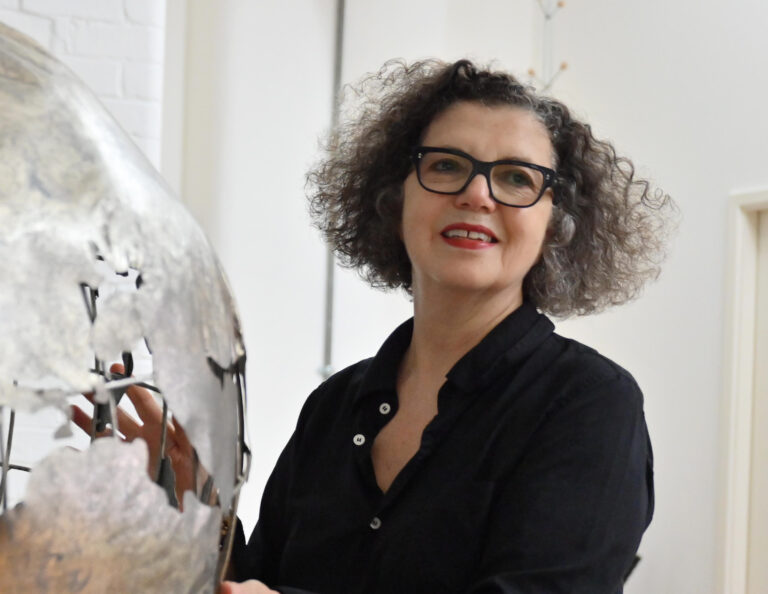
Mona Hatoum is a British Palestinian artist whose poetic and political oeuvre is realized in a diverse and often unconventional range of media,including installation,sculpture,video,photography and works on paper. She was born into a Palestinian family who,exiled from their homeland,had settled in Beirut,Lebanon. When on a short trip to London in 1975,the outbreak of the Lebanese Civil War prevented Hatoum from returning to Beirut. Based in London she pursued a long-held dream to become an artist studying Fine Art from 1975 to 1981 at Byam Shaw School of Art and Slade School of Fine Art. Initially through performance and video and later through installations and large-scale artworks,she expresses the agony and pain experienced by displaced people,social contradictions,and political repression. Hatoum has developed a language in which familiar,domestic everyday objects are often transformed into foreign,threatening and dangerous things,as well as using cartography to explore instability and precariousness in today’s political landscape. Constantly in demand,Hatoum’s works feature in major contemporary art collections and exhibitions. In 2016,a large retrospective exhibition was held at Tate Modern,London and in 2017,she received the Hiroshima Art Prize.
Biography
Mona Hatoum is a British Palestinian artist whose poetic and political oeuvre is realized in a diverse and often unconventional range of media,including installation,sculpture,video,photography and works on paper.
She was born into a Palestinian family who,exiled from their homeland,had settled in Beirut,Lebanon. When on a short trip to London in 1975,the outbreak of the Lebanese Civil War prevented Hatoum from returning to Beirut.
Based in London she pursued a long-held dream to become an artist,studying Fine Art from 1975 to 1981 at Byam Shaw School of Art and Slade School of Fine Art. Initially she worked in video and performance and later extending her creation to installations and large-scale artworks.
One of her earliest works,Measures of Distance (1988) was an uncharacteristically autobiographical piece featuring a conversation between the artist and her mother,a conversation that reveals the pain of separation and the impact of distance. Another early piece,Corps étranger (1994) was the result of her critical awareness of the proliferation of surveillance cameras in London. She projects the results of an endoscopy filming her insides onto the floor of a cylindrical structure,the viewer becoming voyeur inside the artist’s own body.
Using cartography to explore instability and precariousness in today’s political landscape,Hatoum has created a series of world maps,ranging from the map created with Nablus soap and beads,Present Tense (1996),to Map (1999),a map created from glass marbles,to the enormous glowing Hot Spot (2006-2013),a globe made with menacing red neon.
Over the years,Hatoum has developed a language in which familiar,domestic everyday objects are often transformed into foreign,threatening and dangerous things,
“I’m interested in ‘the uncanny.’ When a perfectly familiar situation suddenly appears strange because it has been associated with some kind of traumatic event,it creates feelings of anxiety,unease and dread.”
In 2017,she received the 10th Hiroshima Art Prize and the resulting visit to Japan inspired the remarkable Remains of the Day; ghostly remains of burnt furniture reminding us of the huge devastation caused by the nuclear bomb while at the same time also echoing the aftermath of violence,of war or the ecological disasters of today.
Her pieces often reflect her hybrid and diverse background. “My roots are in the Middle-East. I have a different view of the world. I have had a very eclectic and heterogeneous cultural experience”.
She has become one of the most important artists globally and her works feature in all major collections. In 2011,she was awarded the Joan Miro Prize. A large survey exhibition of her work was held at Centre Pompidou,Paris; Tate Modern,London and Kiasma,Helsinki from 2015 to 2017.
Currently,she is based in London and spends her days,as she says,doing “work,work,work.”
Chronology
46th Venice Biennale
Solo exhibition at Tate Britain,London
Roswitha Haftmann Stiftung Prize,Zurich
Documenta XIV
Honorary Doctorate,American University of Beirut
Honorary Doctorate,University of Southampton
-
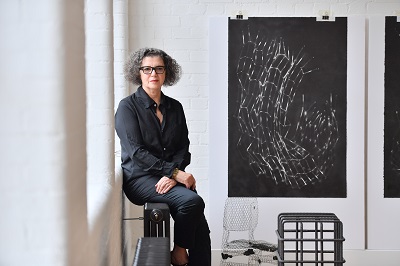
At her studio in London
-
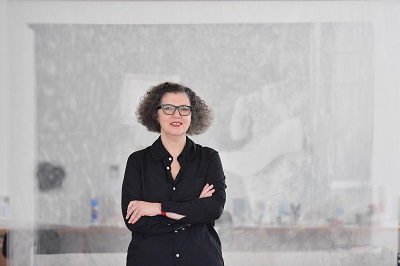
At her studio in London
-
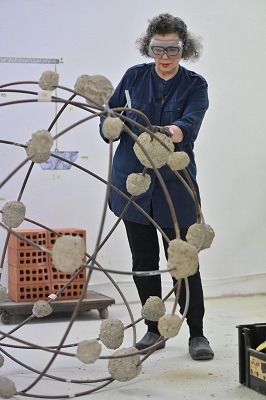
At her studio in London
-
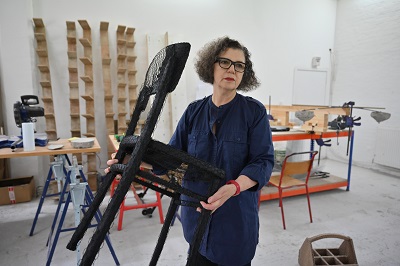
At her studio in London
-
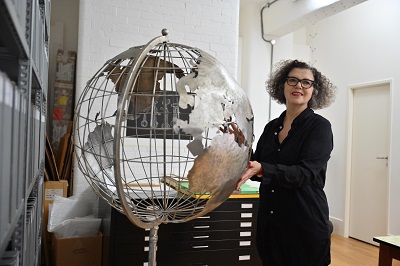
At her studio in London
-
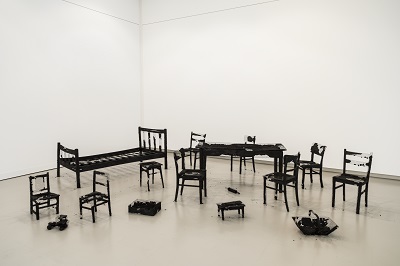
Remains of the Day, 2017
